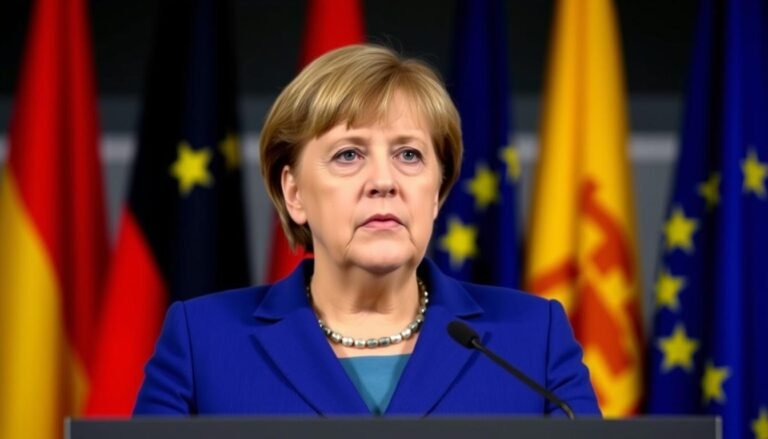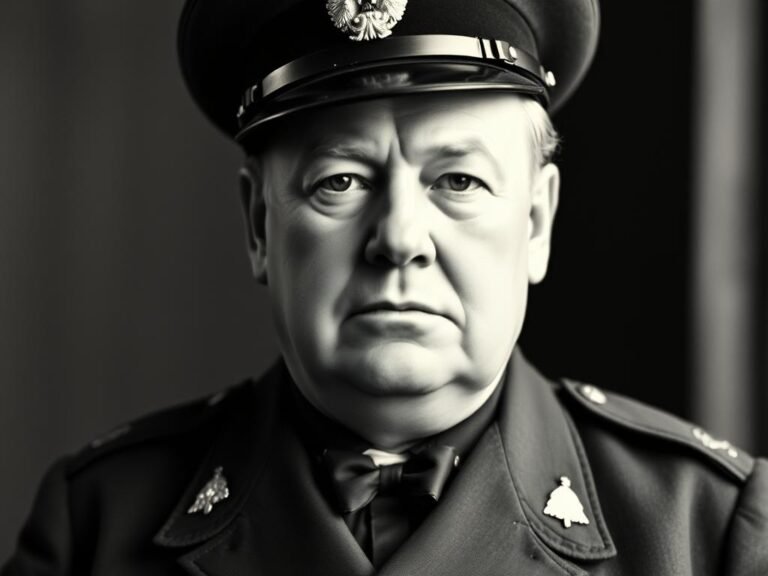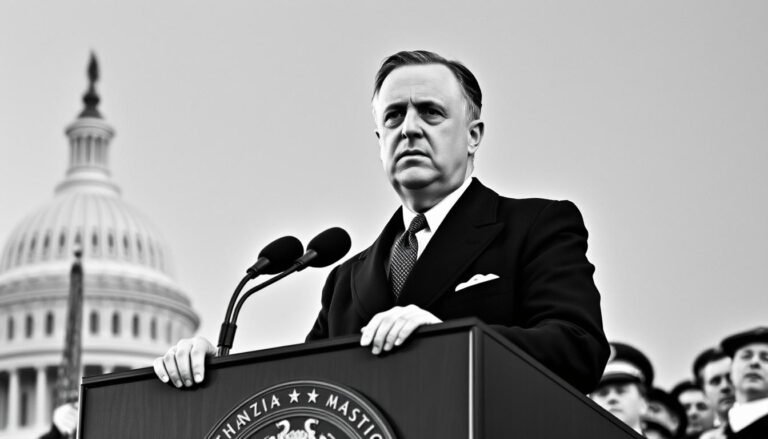Mahatma Gandhi: How Peace Became Power
In a world where power is often equated with force, Mahatma Gandhi introduced a revolutionary concept: peace as the ultimate form of power. His philosophy of non-violent resistance, or Satyagraha, wasn’t merely a moral stance—it was a strategic political tool that helped free a nation from colonial rule and inspired movements across the globe. Gandhi’s approach inverted traditional power dynamics by demonstrating that the refusal to participate in violence could be more potent than violence itself. This article explores how Gandhi transformed peace from a passive ideal into an active force for political and social change, challenging us to reconsider what true power means in conflict resolution.
Defining “Peace as Power” in Gandhi’s Context
Gandhi leading supporters during a peaceful protest march, embodying his philosophy that non-violence could be more powerful than force
For Gandhi, peace wasn’t the absence of conflict but an active force for change. “Peace as power” in Gandhi’s philosophy meant harnessing moral authority and human dignity as political weapons. He called this approach Satyagraha—a Sanskrit term combining “satya” (truth) and “agraha” (firmness or holding). Unlike passive resistance, Satyagraha was an assertive strategy that confronted injustice without resorting to violence.
Gandhi rejected the notion that power necessarily flows from physical force or coercion. Instead, he proposed that genuine power emerges from truth, love, and self-suffering. As he famously stated, “Non-violence is the greatest force at the disposal of mankind. It is mightier than the mightiest weapon of destruction devised by the ingenuity of man.”
This redefinition of power challenged colonial authorities who relied on military might. By refusing to engage on their terms, Gandhi created a new battlefield where moral strength outweighed physical dominance. His approach exposed the fundamental weakness of oppressive systems: they ultimately depend on the cooperation of the oppressed.
The Three Pillars of Gandhi’s Peace as Power
Ahimsa (Non-violence)
More than just avoiding physical harm, Ahimsa meant active love and goodwill toward all, including opponents. Gandhi believed that inflicting suffering on others ultimately harmed oneself. By refusing to hate or harm the British, he maintained moral superiority and prevented the cycle of violence that often perpetuates conflict.
Satya (Truth)
Gandhi saw truth as both the means and the end. He believed that adhering to truth in all actions created an unshakable foundation for resistance. This commitment to truth required complete transparency in motives and methods, making his movement difficult to discredit. It also meant acknowledging one’s own failings and the humanity of opponents.
Tapasya (Self-suffering)
The willingness to accept suffering rather than inflict it was central to Gandhi’s approach. Through fasting, imprisonment, and physical hardship, Gandhi demonstrated the power of voluntary suffering to awaken conscience. This self-imposed suffering created moral pressure that was difficult for authorities to counter without appearing cruel.
These principles transformed peace from a passive state into an active force. By combining them, Gandhi created a method of conflict resolution that didn’t rely on defeating opponents but on converting them through moral persuasion. This approach required tremendous discipline and training—Gandhi’s followers underwent rigorous preparation to maintain non-violence even when provoked or attacked.
Historical Context: India’s Struggle for Independence
To understand the revolutionary nature of Gandhi’s approach, we must examine the context in which it emerged. By the early 20th century, British colonial rule in India had lasted nearly 200 years. The British Empire controlled India’s governance, economy, and resources, creating a system that enriched Britain while impoverishing India.
Previous resistance efforts had included both conventional political advocacy and violent revolutionary movements. The Indian National Congress, founded in 1885, had pursued constitutional reforms with limited success. Meanwhile, revolutionary groups advocating armed resistance faced brutal suppression and failed to gain widespread support.

The stark power imbalance between British colonial authorities and Indian subjects that Gandhi’s non-violent approach sought to overcome
Gandhi returned to India from South Africa in 1915, where he had already developed and tested his non-violent methods. India at this time was experiencing increased political awareness and nationalism, yet remained deeply divided along religious, caste, and regional lines. The British exploited these divisions through their “divide and rule” strategy.
World War I had further strained India’s resources, with over one million Indians serving in the British forces and the colony bearing heavy financial burdens. Post-war economic depression, combined with the influenza pandemic of 1918-19, created widespread suffering. The Jallianwala Bagh massacre in 1919, where British troops killed hundreds of unarmed protesters, further inflamed anti-colonial sentiment.
It was in this environment of oppression, division, and growing discontent that Gandhi introduced his revolutionary approach. What made his method particularly powerful was its ability to unite diverse groups across India’s social spectrum. By emphasizing moral principles rather than specific political ideologies, Gandhi created a movement accessible to all Indians regardless of religion, caste, or education level.
Perhaps most importantly, Gandhi recognized that India’s greatest strength was its vast population. If millions of Indians withdrew their cooperation from colonial institutions, the British would find it impossible to govern. This insight transformed India’s apparent weakness—its lack of military power—into its greatest asset through coordinated non-cooperation.
Key Campaigns: Strategic Victories Through Non-Violence
The Non-Cooperation Movement (1920-1922)
The Non-Cooperation Movement marked Gandhi’s first nationwide campaign of civil disobedience. Its strategic brilliance lay in targeting the foundations of British rule without direct confrontation. Gandhi called on Indians to boycott British goods, institutions, and titles, while establishing parallel Indian institutions.

Indians burning foreign cloth during the Non-Cooperation Movement, rejecting British goods as part of Gandhi’s strategy
The movement included several strategic elements:
- Boycott of British educational institutions, with the establishment of national schools and colleges
- Boycott of British courts, with the creation of private arbitration courts
- Boycott of foreign cloth, with the revival of hand-spinning and khadi (homespun cloth)
- Resignation from government positions and return of British honors
The results were remarkable. Thousands of students left government schools, lawyers abandoned British courts, and the import of foreign cloth dropped dramatically. The movement demonstrated that ordinary Indians could withdraw their cooperation from colonial institutions without resorting to violence.
Gandhi suspended the movement in 1922 after violence erupted in Chauri Chaura, where protesters killed 22 policemen. This decision disappointed many nationalists but reinforced Gandhi’s commitment to non-violence as a principle, not merely a tactic. It also demonstrated his understanding that violence would undermine the moral foundation of the independence movement.
The Salt March: Defiance Without Violence (1930)
The Salt March represents perhaps the most brilliant application of Gandhi’s “peace as power” philosophy. The British salt monopoly prohibited Indians from collecting or selling salt independently, forcing them to buy heavily taxed salt from the government. This tax affected every Indian, making it an issue that transcended social divisions.

Gandhi collecting salt at Dandi Beach in defiance of British salt laws, a simple act that became a powerful symbol of resistance
Gandhi’s 240-mile march to the sea to make salt was a masterclass in political theater. The 24-day journey generated enormous publicity, with each village along the route becoming a recruitment center for the movement. When Gandhi finally reached the sea and picked up a handful of salt, he had committed a crime so simple yet so powerful that it exposed the absurdity of colonial rule.
The strategic brilliance included:
- Selecting an issue that affected all Indians regardless of class, religion, or region
- Creating a campaign that anyone could participate in, from making salt to boycotting government salt
- Designing a visual narrative that generated international media attention
- Forcing the British into a no-win situation: either allow laws to be broken or arrest peaceful protesters
The British response of mass arrests (including Gandhi himself) only strengthened the movement. Images of peaceful protesters being beaten by police shocked the world and undermined British claims of moral authority. Over 60,000 Indians were imprisoned, overwhelming the colonial justice system.
The Salt March didn’t immediately end the salt monopoly, but it achieved something more important: it demonstrated that ordinary Indians could challenge British authority through coordinated non-violent action. It transformed the independence movement from an elite political project into a mass movement with international support.
Quit India Movement (1942)
The Quit India Movement represented the culmination of Gandhi’s strategy. Launched during World War II with the simple demand that the British “quit India,” it demonstrated how non-violent resistance could function even when leadership was imprisoned. Within hours of the movement’s announcement, the entire Congress leadership was arrested, forcing ordinary Indians to organize resistance independently.

Mass demonstration during the Quit India Movement, showing how Gandhi’s philosophy mobilized millions across India
Despite (or perhaps because of) the absence of central leadership, the movement spread rapidly across India. People established parallel governments, disrupted communication lines, and organized strikes. The British responded with unprecedented repression, including public floggings and firing on crowds, which only further delegitimized colonial rule.
While the movement was eventually suppressed, it demonstrated that India had become ungovernable without the consent of its people. It convinced British leaders that maintaining control of India after the war would be impossible, accelerating plans for independence.
These campaigns illustrate how Gandhi transformed peace from a passive ideal into an active political force. By selecting strategic targets, creating simple actions anyone could participate in, and maintaining strict non-violence, he created a form of resistance that the British military machine was ill-equipped to counter.
The Psychological and Sociopolitical Mechanisms Behind Peace as Power
Gandhi’s success wasn’t accidental. His approach leveraged fundamental psychological and sociopolitical principles that transformed non-violence from a moral stance into an effective political strategy.
Moral Jiu-Jitsu: Redirecting Force
Just as martial arts like jiu-jitsu use an opponent’s force against them, Gandhi’s approach redirected the power of the oppressor. When peaceful protesters were met with violence, that violence exposed the moral bankruptcy of the oppressor while elevating the moral standing of the protesters. As political scientist Gene Sharp later theorized, this “political jiu-jitsu” creates a situation where repression backfires on the oppressor.

The contrast between force and non-violence created a moral dilemma for authorities that undermined their legitimacy
This dynamic was clearly visible during the Salt March campaign. When police brutally beat peaceful protesters at Dharasana Salt Works, the violence didn’t intimidate Indians—it galvanized them. American journalist Webb Miller’s eyewitness reports shocked international audiences: “In eighteen years of reporting in twenty-two countries, I have never witnessed such harrowing scenes as at Dharasana.” The British found themselves losing the moral argument despite “winning” the physical confrontation.
Cognitive Dissonance and Conversion
Gandhi understood that sustainable change required converting opponents, not defeating them. His approach created cognitive dissonance in the minds of oppressors by forcing them to confront the contradiction between their self-image as civilized rulers and their actions against peaceful protesters.
As Gandhi explained: “The idea is to transform the opponent and yourself in the process.” This transformation occurs when people cannot reconcile their actions with their values. British officers who considered themselves just and civilized faced a psychological crisis when ordered to beat non-violent protesters. Some resigned their positions; others became sympathetic to the Indian cause.
This psychological mechanism was particularly effective with British citizens at home. Many who supported colonial rule in abstract terms found their position untenable when confronted with images of peaceful Indians being brutalized for making salt or wearing homespun cloth.
Breaking the Cycle of Violence
Gandhi recognized that violence creates self-perpetuating cycles. When resistance movements use violence, they provide moral justification for violent suppression. By strictly adhering to non-violence, Gandhi denied the British this justification while preventing the movement from descending into the very oppression it sought to end.
“An eye for an eye makes the whole world blind.”
This insight had practical implications. By maintaining non-violence even when provoked, Gandhi’s followers demonstrated discipline that earned respect from opponents. It also prevented the independence movement from fracturing into competing violent factions, as happened in many other anti-colonial struggles.
Mass Participation and Distributed Power
Perhaps most importantly, Gandhi’s approach enabled mass participation. Violent resistance requires weapons, training, and secrecy, limiting participation to young, physically capable fighters. Non-violent resistance, by contrast, allows everyone—including women, elderly, and children—to participate according to their abilities.

Gandhi’s approach enabled participation across age, gender, and social divisions, creating a truly national movement
This inclusivity transformed India’s large population from a liability into an asset. The British military could defeat armed rebels, but it couldn’t arrest millions of peaceful protesters without paralyzing its own administration. As Gandhi noted, “Even the most powerful cannot rule without the cooperation of the ruled.”
These mechanisms explain why Gandhi’s approach succeeded where others failed. By understanding the psychological and sociopolitical dynamics of power, he created a method of resistance that was simultaneously moral and practical, idealistic and strategic.
Modern Applications of Gandhi’s Principles in Global Activism
Gandhi’s philosophy of peace as power didn’t end with India’s independence. His methods have been adapted and applied by movements worldwide, demonstrating their continued relevance in addressing contemporary conflicts and injustices.
Civil Rights Movement in the United States
Martin Luther King Jr. explicitly acknowledged his debt to Gandhi, stating: “Christ gave us the goals and Mahatma Gandhi the tactics.” The American Civil Rights Movement adapted Gandhian principles to the struggle against racial segregation, using non-violent direct action to expose the injustice of Jim Crow laws.

Martin Luther King Jr. leading a civil rights march, applying Gandhi’s principles to the struggle for racial equality in America
Key Gandhian tactics adapted by the movement included:
- Lunch counter sit-ins, where Black students peacefully occupied segregated spaces
- Freedom Rides challenging segregation in interstate transportation
- Mass marches that invited violent response to expose the brutality of segregation
- Economic boycotts like the Montgomery Bus Boycott
These tactics succeeded in generating national attention and moral pressure that eventually led to the Civil Rights Act of 1964 and Voting Rights Act of 1965. Like Gandhi, King understood that the goal wasn’t merely to defeat opponents but to create “a beloved community” where reconciliation was possible.
Anti-Apartheid Movement in South Africa
The struggle against apartheid in South Africa—where Gandhi had first developed his methods—incorporated many elements of Satyagraha. While the anti-apartheid movement included armed resistance, non-violent methods played a crucial role in generating international pressure on the regime.
Nelson Mandela, who initially advocated armed struggle, later embraced reconciliation rather than retribution. The Truth and Reconciliation Commission embodied the Gandhian principle that peace requires addressing injustice without perpetuating cycles of violence.
Color Revolutions and the Arab Spring
More recently, movements like Serbia’s Otpor (2000), Ukraine’s Orange Revolution (2004), and the early stages of the Arab Spring (2011) have applied non-violent strategies influenced by Gandhian principles. These movements used creative tactics to undermine authoritarian regimes through mass participation and withdrawal of consent.

Protesters in Tahrir Square during the Egyptian Revolution of 2011, demonstrating the continued relevance of non-violent resistance
The Serbian movement Otpor explicitly studied Gandhian tactics and Gene Sharp’s theoretical work on non-violent action. Their success in overthrowing Slobodan Milošević inspired similar movements in Georgia, Ukraine, and throughout the Middle East.
Environmental Activism
Contemporary environmental movements have adapted Gandhian principles to address ecological crises. The water conservation movement led by Rajendra Singh in Rajasthan, India, directly applies Gandhi’s emphasis on self-reliance and local action. Similarly, the Chipko movement to protect forests used the Gandhian tactic of interposing human bodies (hugging trees) to prevent destruction.
More globally, organizations like Extinction Rebellion employ civil disobedience tactics inspired by Gandhi to draw attention to climate change, while emphasizing non-violence and a willingness to accept legal consequences.
Digital Satyagraha
Perhaps most interestingly, Gandhi’s principles have been adapted to the digital age. Online activism, hacktivist groups, and digital civil disobedience represent modern evolutions of non-violent resistance. While Gandhi couldn’t have envisioned the internet, his core insight—that power depends on consent and cooperation—applies equally to digital systems.

Digital activists using technology to organize non-violent resistance, adapting Gandhi’s methods to the information age
Whistleblowing, information leaks, and digital boycotts represent contemporary applications of Gandhi’s strategy of non-cooperation. When Edward Snowden exposed surveillance programs, he cited the principle of satyagraha—acting in accordance with truth despite personal risk—as part of his motivation.
These diverse applications demonstrate the adaptability and continued relevance of Gandhi’s approach. While contexts change, the fundamental insight that peace can be an active force for change remains powerful across cultures and time periods.
Critical Perspectives: Limitations and Challenges of Non-Violent Resistance
While Gandhi’s philosophy of peace as power has demonstrated remarkable effectiveness, a comprehensive analysis requires examining its limitations and the challenges it faces in various contexts.
Preconditions for Success
Scholars have identified several conditions that may be necessary for non-violent resistance to succeed:

Different outcomes of non-violent movements highlight the importance of specific conditions for success
- Moral vulnerability of the opponent: The British, despite their colonial policies, were sensitive to public opinion and had some commitment to liberal values. Against regimes with no such constraints, non-violence may be less effective.
- Media access and visibility: Gandhi’s campaigns succeeded partly because they generated international attention. In contexts where protests can be hidden from view, this pressure may be absent.
- Capacity for mass participation: Non-violent resistance requires large-scale participation to be effective. In highly repressive societies where organization is difficult, this may not be possible.
Critics point to cases like Tibet, where decades of non-violent resistance against Chinese occupation have yielded little progress, or the brutal suppression of peaceful protests in Syria before the civil war. These examples suggest that non-violence may have limited effectiveness against certain types of regimes.
The Question of Privilege
Some critics argue that non-violence may be a luxury available primarily to those with certain forms of privilege. The ability to accept suffering without retaliation may depend on having sufficient security that such suffering won’t be existential.
Frantz Fanon, writing about the Algerian independence struggle, argued that for the deeply colonized, violence could be psychologically necessary for liberation. Similarly, Malcolm X questioned whether non-violence was appropriate for Black Americans facing systemic violence, suggesting that self-defense was a human right that couldn’t be surrendered.
These critiques raise important questions about whether non-violence places an undue burden on the oppressed to suffer for their liberation, while allowing oppressors to avoid full accountability.
Time and Urgency
Non-violent movements often require significant time to succeed. India’s independence struggle lasted decades. For communities facing immediate existential threats, this timeframe may be unacceptable.
“How long must we wait for the realization of freedom? I have heard this question asked many times… But I say to you that freedom is not given, it is taken.”
This tension between immediate protection and long-term transformation remains unresolved in many conflict situations. While Gandhi’s approach may ultimately create more sustainable peace, it may not address urgent security needs.
Complexity of Modern Conflicts
Contemporary conflicts often involve multiple parties with competing interests, making the clear moral dichotomy of colonizer/colonized less applicable. In civil wars with sectarian dimensions, identifying a single opponent against whom to direct non-violent resistance becomes difficult.

The complexity of modern conflicts with multiple armed factions presents challenges for traditional non-violent approaches
Additionally, economic globalization means that power is often diffuse rather than concentrated in visible institutions. When oppression stems from complex global systems rather than direct colonial rule, the targets for non-violent action become less obvious.
Gandhi’s Own Limitations
Even Gandhi acknowledged limitations to his approach. He stated that non-violence required courage and that “where there is only a choice between cowardice and violence, I would advise violence.” He also recognized that his methods required a level of discipline and training that not all movements could achieve.
Modern scholars have also critiqued aspects of Gandhi’s philosophy, particularly his sometimes paternalistic attitudes toward certain groups and his idealization of suffering. These critiques suggest that while his core insights remain valuable, they may need adaptation to address contemporary ethical concerns.
Synthesis: A Pragmatic Approach
A balanced assessment suggests that non-violent resistance is neither universally applicable nor inherently flawed. Rather, it represents one powerful tool among many for addressing injustice. Its effectiveness depends on context, implementation, and combination with other approaches.
Many successful movements have combined principled non-violence with pragmatic flexibility. The anti-apartheid struggle included both non-violent resistance and armed components. Similarly, the Indian independence movement encompassed Gandhi’s non-violence alongside more militant approaches from figures like Subhas Chandra Bose.
This suggests that peace as power is most effective when understood as a strategic choice rather than a moral absolute—exactly as Gandhi himself often presented it, despite his personal commitment to non-violence as a way of life.
Conclusion: The Enduring Legacy of Peace as Power

Gandhi’s legacy continues to inspire non-violent movements for justice and change around the world
Gandhi’s revolutionary insight—that peace could be transformed from a passive ideal into an active political force—fundamentally changed how we understand power and resistance. By demonstrating that non-violence could achieve what violence could not, he created a new paradigm for social change that continues to influence movements worldwide.
The core strength of Gandhi’s approach lies in its recognition of human dignity and interconnection. Unlike violent resistance, which risks dehumanizing opponents, non-violence maintains the possibility of reconciliation and shared future. As Gandhi stated, “The means may be likened to a seed, the end to a tree; and there is just the same inviolable connection between the means and the end as there is between the seed and the tree.”
In today’s world of increasing polarization and conflict, Gandhi’s philosophy offers a vital alternative to cycles of violence and retribution. While not universally applicable in all situations, his insights into the psychological and sociopolitical mechanisms of power remain profoundly relevant.
Perhaps most importantly, Gandhi’s approach empowers ordinary people to become agents of change rather than passive victims of circumstance. By demonstrating that power ultimately rests on consent and cooperation, he provided a method through which even the most marginalized communities can assert their dignity and rights.
As we face contemporary challenges from climate change to authoritarianism, Gandhi’s legacy reminds us that transformative change often begins not with overwhelming force but with the courage to stand firmly in truth and peace. In a world where power is too often equated with domination, his message that true power lies in peace, truth, and love offers a revolutionary alternative as relevant today as it was a century ago.
“When I despair, I remember that all through history the way of truth and love have always won. There have been tyrants and murderers, and for a time, they can seem invincible, but in the end, they always fall. Think of it—always.”
Apply Gandhi’s Principles in Today’s World
Want to learn how to implement Gandhi’s non-violent strategies in modern conflicts? Our free guide “Modern Applications of Gandhian Principles” provides practical frameworks for applying peace as power in contemporary activism, community organizing, and conflict resolution.
Further Resources on Gandhi’s Philosophy
Books by Gandhi
- An Autobiography: The Story of My Experiments with Truth – Gandhi’s personal account of his journey
- Hind Swaraj – His foundational text on Indian self-rule
- Satyagraha in South Africa – Details of his early campaigns
Modern Analyses
- The Politics of Nonviolent Action by Gene Sharp – Theoretical framework building on Gandhi’s approach
- Why Civil Resistance Works by Erica Chenoweth and Maria Stephan – Statistical analysis of non-violent movements
- Gandhi the Man by Eknath Easwaran – Accessible introduction to Gandhi’s philosophy
Organizations Applying Gandhi’s Principles
- International Center on Nonviolent Conflict – Research and training on civil resistance
- American Friends Service Committee – Quaker organization promoting peace
- GandhiServe Foundation – Preserving and promoting Gandhi’s legacy

“In a gentle way, you can shake the world.” – Mahatma Gandhi







